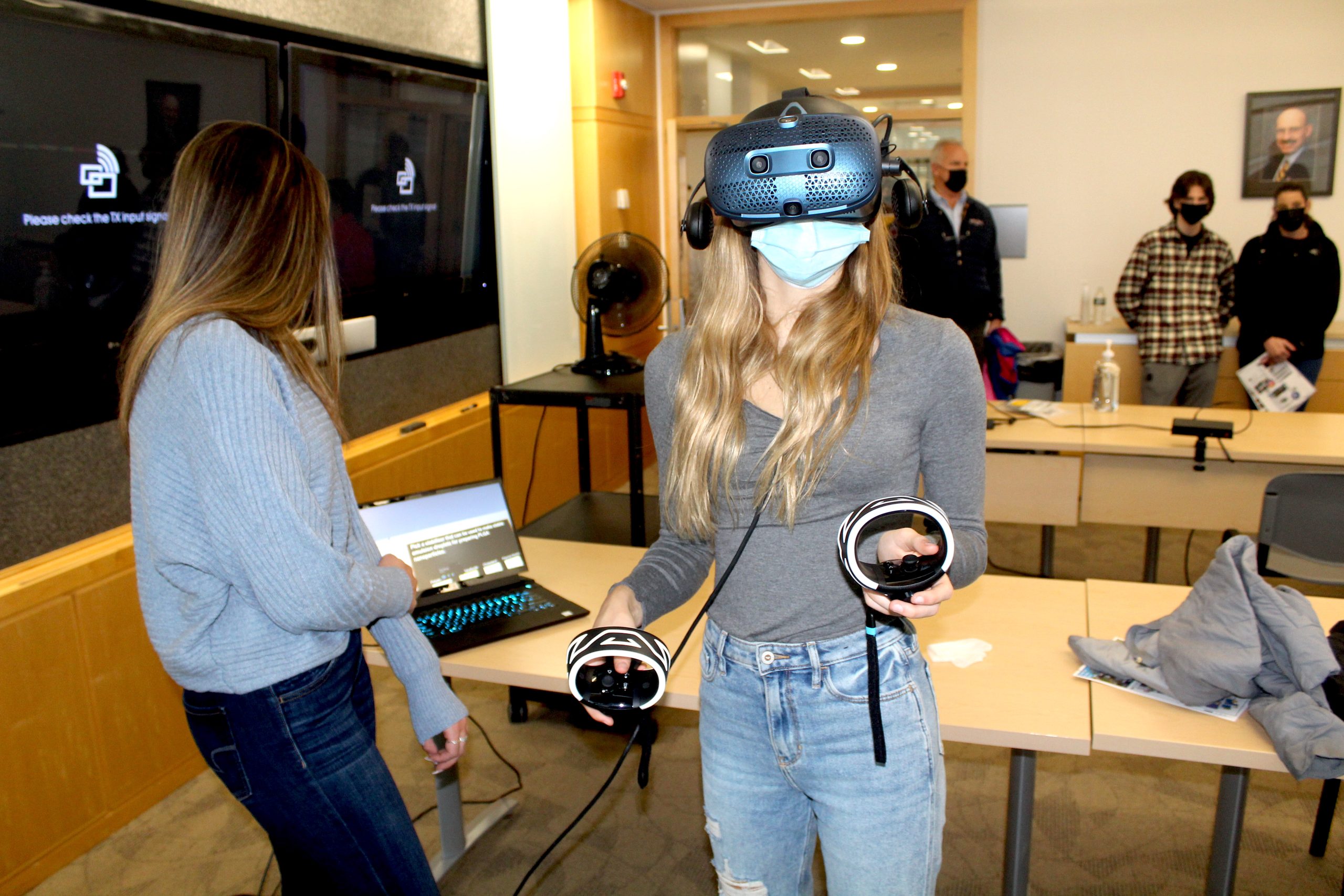Pharmacy students at URI now have access to virtual reality equipment to get first-hand experience with their studies. PHOTO CREDIT: uri.edu
The University of Rhode Island’s College of Pharmacy has added Virtual Reality (VR) to its curriculum to help students understand the human body and pharmaceuticals.
Bongsup Cho, a pharmacy professor at URI, mentioned that this is a continuation of the school’s long history of using modern technology to benefit education, which started years ago when the school began using 3D animation.
“I was able to get high-end computers and the software we used was Maya, that’s the software that was used to create ‘Toy Story’ and other fancy animations,” Cho said.
This technology worked, as it gave students an opportunity to see the molecules from a 3D perspective. The animations were even put onto YouTube, where people have used them to help explain how proteins and drugs work in the body.
The school also wanted to use 3D printing, which led to Cho getting another grant to buy a 3D printer which would make the education even more immersive.
“A computer, you only see half of the real thing, you can’t really go back to the [drug or enzyme], the beauty of the 3D printer is that you can actually have the whole thing in your hand, which you can flip around and see the whole thing,” Cho said.
Now the school is using VR technology, technology that is even more immersive than the static 3D printed images.
According to Roy Bergstrom, lead information technologist for URI’s Media and Technology Services Department, the school began looking into the prospect of getting VR technology about four years ago.
Bergstrom said that along with the Student Technology Assistants Program, the school has been developing apps which take the form of both games and interactive walk through quizzes which explain how drugs interact with the human body.
The technology is being used right now, with applications such as the methotrexate application which shows how the drug, which is used for treating cancer, interacts with the human body.
“It is embedded into a course as an instructional material that students will use as part of assignments and things of that nature,” Bergstrom said.
He also mentioned that the games will be used for classes as well, being available to the public and being accessible through a URI server online.
The games will be available for both VR and regular online games that can be used by anyone regardless of if they have a VR set.
“In first-person games, you use a keyboard and mouse, instead of controllers, and you use the computer monitors to see what the game is,” Bergstrom said.
Applications are currently being worked on by both students and faculty as ways to continue making a more immersive experience.
Christopher Hemme, assistant professor and INBRE Bioinformatics Core Coordinator says that VR makes the information more immersive than ever before.
“The traditional way we would look at molecules in 3D is on the screen, so we would have the stereoscopic view and maybe wear the [3D] glasses, but there you can manipulate things with the mouse and the keyboard, but it’s still in 2D,” Hemme said
In VR, the student can reach out and grab the molecules and manipulate their sizes and colors making it more interactive than the animation and printing. He mentioned that he had used the technology with high school students who had come and visited and that it was much easier than with a static screen of a regular computer.
Student feedback has been positive, which Hemme believes is due to the more immersive technology almost making all the apps resemble video games.
Overall, the school is happy to have the VR, and both Cho and Bergstrom mentioned that they are the only pharmacy school in the country with this type of technology.
The school will continue to use all three of the technologies as a way to teach students.
“There are some situations where the standard animations or 3D printing is fine, there are others where the fully immersive VR works best,” Hemme said.
Cho said that he hopes that in the future, there will be even more VR machines to continue to make an immersive experience for the students.





